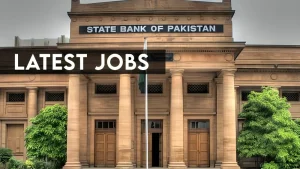Islamabad: In a recent feature, Barron’s, a leading American financial publication owned by Dow Jones & Company, described Pakistan’s recent economic performance as a “macroeconomic miracle of sorts.”
The article highlights a dramatic reversal in key economic indicators, while cautioning that the country still faces significant long-term structural vulnerabilities.
According to Barron’s, the South Asian nation of 255 million has achieved impressive macroeconomic stabilization over the past two years.
Among the most striking developments is a sharp drop in inflation—from a staggering 38% in May 2023 to just 0.3% in April 2025.
Meanwhile, Pakistan’s Eurobonds due in 2031 have surged in value, climbing from 40 to 80 cents on the dollar. The Pakistan Stock Exchange has also seen its main index triple during the same period.
The report attributes part of this turnaround to a $7 billion stabilization agreement with the International Monetary Fund (IMF) signed in September 2024, of which more than $2 billion has already been disbursed.
It also cites prudent monetary policy, such as the State Bank of Pakistan’s (SBP) aggressive rate hikes, which raised the policy rate from 10% to 22% at the height of the inflation crisis—a move that has since been gradually reversed, bringing the rate down to 11% as of 2025.
Investment managers quoted in the article reflect growing optimism. Genna Lozovsky, CIO at Sandglass Capital Management, noted that Pakistan has become “not risky enough” for funds that specialize in distressed debt.
Resilient Economy
Alison Graham, CIO at Voltan Capital Management, admitted many had expected Pakistan to default alongside Sri Lanka in 2023, but “the country proved the doubters wrong.”
Finance Minister Muhammad Aurangzeb was also quoted, downplaying the impact of recent military skirmishes with India.
He described the escalation as brief and said any fiscal consequences could be absorbed within Pakistan’s current budgetary space.
Yet despite the positive headlines, Barron’s underscored the continued fragility of Pakistan’s economy.
The country remains heavily dependent on external financing and the ongoing IMF programme, which mandates difficult reforms such as broadening the tax base, cutting electricity subsidies, and reducing fiscal deficits.
Khaled Sellami, a sovereign debt expert at Barings, pointed out that Pakistan’s current account is in surplus and the country is reporting a primary fiscal surplus—something not seen in years.
However, structural challenges remain. The report stressed that Pakistan’s export base is narrow, with cotton, textiles, and food commodities making up two-thirds of exports.
Read More: World Economic Forum Recognizes Pakistan’s Digital Economy Advancements
Although IT outsourcing is gaining traction, with annual exports climbing to $3 billion, this still pales in comparison to regional competitor India’s $200 billion tech sector.
According to Graham, while the outlook has improved, Pakistan is still highly vulnerable to external shocks. “When there is a rally, you need to be in early,” she advised, hinting at the volatility still embedded in the system.
Sellami concluded that with Pakistan’s strategic value to traditional allies like the United States declining, even long-time partners such as China, Saudi Arabia, and the UAE are showing less willingness to offer unconditional support.
Also Read: Azerbaijan Eyes $2B Investment in Pakistan’s Economy
This has increased pressure on Islamabad to maintain strict fiscal discipline. “They know if they deviate from the tightrope they are walking, they won’t have external finance,” he warned.









